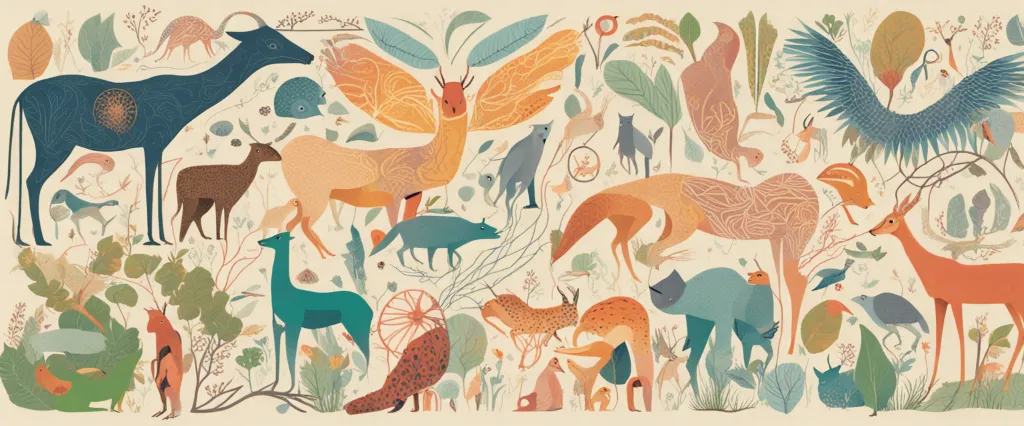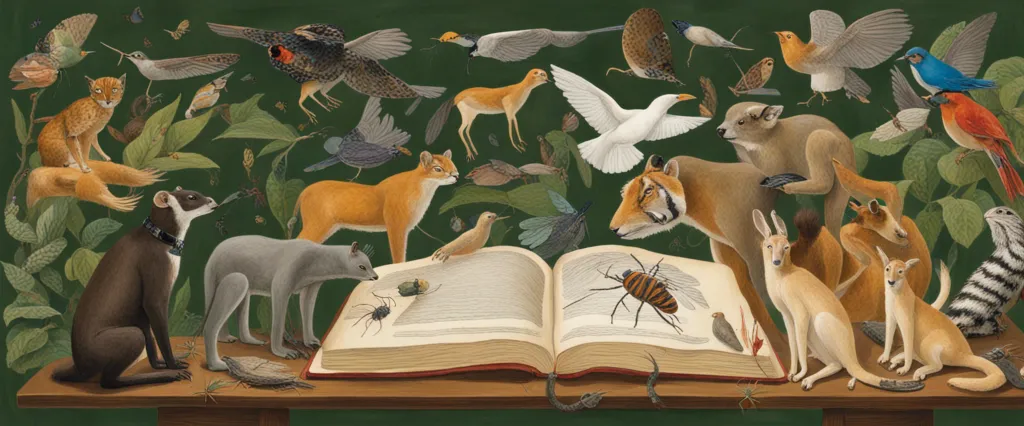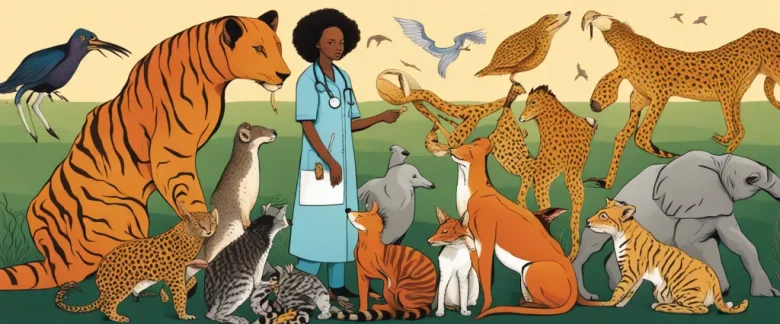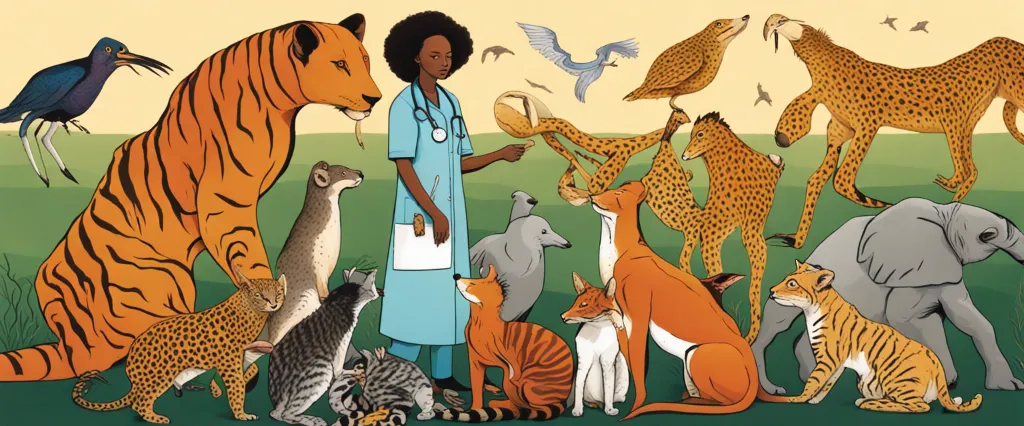In “Dr. Tatiana’s Sex Advice to All Creation,” Olivia Judson offers a captivating exploration into the intricate world of sexual behavior throughout the animal kingdom. With her extensive knowledge as an evolutionary biologist, Judson takes readers on an eye-opening journey to unveil the astonishing diversity and astounding strategies employed by numerous species in their pursuit of reproduction. As a widely acclaimed science writer and researcher, Olivia Judson possesses a remarkable ability to communicate complex concepts in an engaging and accessible manner, making her an exceptional guide through the captivating realm of Dr. Tatiana’s enlightening sex advice.
Chapter 1: Introduction to the World of Sex
Chapter 1: Introduction to the World of Sex of the book “Dr. Tatiana’s Sex Advice to All Creation” by Olivia Judson introduces the concept of sex and explores its prevalence and variety throughout the animal kingdom. The chapter sets the stage for understanding the dynamic world of sexual behavior and its significance in the natural world.
Dr. Tatiana, a fictional sex therapist, acts as the narrator, providing advice to various animal species. She explains that while reproduction is the ultimate goal of sex, animal species have evolved diverse and sometimes bizarre strategies to ensure successful mating and gene transfer.
Several examples are given to showcase the wide-ranging methods of sexual reproduction. The chapter discusses hermaphrodites, such as the banana slug, where individuals possess both male and female reproductive organs, allowing them to mate with any other slug they encounter. Other examples include the intricate courtship rituals of birds, where males display flamboyant plumage or engage in elaborate dances to attract a mate.
Dr. Tatiana also highlights the intense competition and conflict that can arise in the struggle to reproduce. Sexual selection, the process where certain traits are favored by mates and therefore become more prevalent in subsequent generations, is explored. This leads to discussions of evolutionary arms races, where males may develop exaggerated displays or weapons to outcompete other males for access to females.
The chapter concludes by emphasizing that understanding the diverse world of sex is crucial for unraveling the intricacies of evolution and the natural world. It teases the valuable insights that can be gained by examining different reproductive strategies across species, setting the stage for further exploration of these themes in subsequent chapters.
Chapter 2: Finding a Partner
Chapter 2 of “Dr. Tatiana’s Sex Advice to All Creation” by Olivia Judson explores the complexity and variety of strategies used by different creatures for finding a partner to mate with. The chapter focuses on various tactical approaches, from competition to deceptive strategies.
Dr. Tatiana begins by discussing the phenomenon of sexual competition, whereby males engage in fierce battles to secure mating opportunities. For instance, elephant seals use their size and strength to battle for dominance and win over a harem of females. Many other species also rely on competitions such as singing, dancing, or fighting to attract mates.
The chapter then delves into deceptive tactics. Dr. Tatiana explains how organisms like anglerfish employ deceptive methods of luring a partner. These fish possess luminescent appendages that mimic prey, attracting unsuspecting mates to their mouths where they become permanently fused.
Another tactic discussed is the use of gifts or nuptial gifts offered by males to females. In these scenarios, the male presents the female with a valuable resource, such as food or sperm, as a way to increase his chances of success. For example, male nursery web spiders wrap their sperm in a silk-wrapped parcel and offer it to the female, decreasing the likelihood that she will eat him before or after mating.
Furthermore, Dr. Tatiana delves into the role of courtship displays in attracting potential mates. From the flamboyant colors and dances of birds of paradise to the intricate web spinning of male orb-weaving spiders, courtship displays serve as demonstrations of fitness and attractiveness.
Throughout the chapter, Dr. Tatiana highlights the various creative strategies employed by different organisms in their quest for mating partners. These methods often reflect the unique evolutionary pressures and adaptations present in each species. By exploring these diverse strategies, readers gain a deeper understanding of the remarkable complexity and ingenuity of the natural world.
Chapter 3: Mating Mechanics
Chapter 3 of “Dr. Tatiana’s Sex Advice to All Creation” by Olivia Judson examines the diverse and fascinating ways in which various organisms tackle the process of mating. The chapter highlights the evolutionary strategies that have emerged in different species to maximize reproductive success.
The chapter begins by discussing the dilemma faced by females in choosing mates. Females often seek males with qualities that indicate good genes, such as physical attractiveness or displays of strength. However, these qualities may not always translate into good fathers or supportive partners. Consequently, females have developed several strategies to navigate this challenge, including polyandry (mating with multiple males), which allows them to secure good genes while also acquiring assistance in raising offspring.
The chapter also explores intriguing mating practices such as sexual cannibalism, where females consume males after mating, as seen in some spider species. While seemingly counterintuitive, this behavior can benefit females by providing extra nourishment for their developing eggs.
Another interesting aspect focuses on the arms race between the sexes. Males often evolve elaborate structures, such as intricate antlers or bright plumage, to compete for mates. In response, females develop mechanisms for selecting only the most fit males or protecting themselves from aggressive suitors.
The author further delves into the complexity of mating systems across species. Some organisms engage in promiscuous mating, while others form monogamous bonds. However, monogamy is not always as straightforward as it seems, as certain species still engage in extra-pair copulations to diversify their offspring’s genetic lineage.
Overall, Chapter 3 serves as a captivating exploration of the wide array of mating strategies employed by organisms throughout the natural world. It enlightens readers about the various considerations, trade-offs, and evolutionary adaptations that have shaped reproductive behavior, providing insights into the remarkable diversity of the Earth’s sexual practices.
Chapter 4: The Battle of the Sexes

In Chapter 4 of “Dr. Tatiana’s Sex Advice to All Creation” by Olivia Judson, titled “The Battle of the Sexes,” the author explores the conflict between males and females in the animal kingdom, particularly in terms of reproductive strategies and evolution.
Judson begins by explaining the two fundamental types of reproductive strategies: male-driven and female-driven. Male-driven strategies are characterized by competition among males for the opportunity to mate, while female-driven strategies involve females being more selective about their partners. These strategies have led to the evolution of various elaborate courtship rituals, mating displays, and physical attributes in different species.
The chapter discusses several fascinating examples of the evolutionary battles between sexes. For instance, Judson explains the “plug and dagger” phenomenon where male fruit flies deposit a plug in the female’s reproductive tract to hinder other males from mating. However, females have developed countermeasures to remove these plugs.
Judson delves into the reproductive challenges faced by the opposite sex in many animals, such as the extreme male self-sacrifice exhibited by redback spiders and the peculiar reproductive system of seahorses, where the males carry the developing young.
Additionally, the author examines how sexual conflict extends to the cellular level. In certain species, sperm cells actively compete with each other for fertilization, with some even evolving adaptations to block the sperm of rival males.
Throughout the chapter, Judson emphasizes the complex dynamics and evolutionary pressures that shape sexual interactions. Whether it is the evolution of intricate courtship dances or ingenious methods to overcome sexual barriers, this battle of the sexes is an ongoing evolutionary drama that has shaped the diversity of life on our planet.
Chapter 5: Love and Lust
Chapter 5 of “Dr. Tatiana’s Sex Advice to All Creation” explores the complex world of love and lust in the animal kingdom. Olivia Judson delves into various species’ intricate strategies to attract mates, navigate sexual encounters, and ensure reproductive success.
The chapter begins with an examination of birds, highlighting species such as the great reed warbler and the Arabian babbler, where males and females engage in promiscuous behavior. Dr. Tatiana presents compelling evidence of how these species confuse parentage, blur sibling relationships, and increase their mating opportunities by engaging in multiple sexual encounters.
Moving onto insects, the book reveals shocking practices like traumatic insemination, where male bedbugs forcefully pierce females’ abdomens with their reproductive apparatus. Additionally, it explores insect species where males evolve mouthparts specially adapted for extracting sperm from females’ previous mates. This phenomenon, called “sperm competition,” showcases an astonishing evolutionary arms race.
Judson further explores examples from the ocean, featuring marine creatures such as mussels and Christmas tree worms. These animals possess both male and female reproductive organs simultaneously, allowing them to reproduce both sexually and asexually. She also presents the remarkable case of anglerfish, where the males are tiny and attach themselves to the females, developing a parasitic relationship to ensure reproductive success.
As the chapter progresses, Judson delves into the intricate strategies that animals employ to attract mates, including physical appearance enhancements, elaborate dances, and mesmerizing courtship rituals. For instance, birds engage in impressive mating displays, while certain shrimp species utilize vibrant colors and intricate pincer movements to allure potential mates.
Overall, Chapter 5 of “Dr. Tatiana’s Sex Advice to All Creation” enlightens readers about the fascinating and diverse world of love and lust that exists throughout the animal kingdom. From peculiar mating practices to intricate courtship strategies, the chapter showcases the myriad ways in which creatures navigate the pursuit of reproduction.
Chapter 6: Parental Care
Chapter 6 of “Dr. Tatiana’s Sex Advice to All Creation” by Olivia Judson delves into the concept of parental care in the animal kingdom, exploring the varied strategies and behaviors displayed by different species to ensure the survival of their offspring.
The chapter begins by highlighting the diverse roles parents play in raising their young. Some parents, such as the female seahorse, bear the burden of gestation and provide protection by incubating the eggs in a brood pouch. This is a rare case in which the male takes on the nurturing role. Other species, like the male sticklebacks, construct elaborate nests where females lay eggs to protect them. In contrast, some animals have no parental care at all and their young are left to fend for themselves from birth.
The author then delves into the reasons behind parental care, explaining that it evolves due to the challenges faced by offspring. These challenges can range from predators to harsh environments and limited resources. Parental care helps increase the survival chances of young by providing food, protection, or guidance.
Furthermore, Judson explores how parental care can differ between species based on their ecological niches and reproductive strategies. Cooperative breeders, such as naked mole rats, live in colonies where only a few individuals reproduce while others assist in caring for the young. Alternatively, brood parasites, like cuckoos, lay their eggs in the nests of other species, tricking them into providing parental care.
The chapter concludes by underlining the trade-offs faced by parents engaging in care. While investing in parental care provides benefits to offspring, it also comes at a cost to the parent’s own survival and reproduction. Ultimately, parental care in the animal kingdom is a complex and dynamic phenomenon that has shaped diverse strategies for optimizing reproductive success and ensuring the survival of future generations.
Chapter 7: Alternative Lifestyles
Chapter 7 of “Dr. Tatiana’s Sex Advice to All Creation” by Olivia Judson is titled “Alternative Lifestyles.” In this chapter, Judson explores the wide array of unique and unconventional reproductive strategies found in the animal kingdom.
The chapter begins by discussing the advantages of asexual reproduction, where individuals can produce offspring without the need for a mate. Judson highlights the case of the stick insect, which can reproduce through parthenogenesis, a process that involves the development of an embryo from an unfertilized egg. She also explains how certain species of lizards and fish can switch between sexual and asexual reproduction depending on the environmental conditions.
The topic then shifts to hermaphroditism, a strategy in which individuals possess both male and female reproductive organs. Judson explores different forms of hermaphroditism, such as simultaneous hermaphroditism, where an organism can assume both male and female roles simultaneously, and sequential hermaphroditism, where individuals change their sex during their lifetime. Species like the wrasse fish and the slipper limpet are given as examples of these strategies.
Judson further delves into the complex interactions and strategies that hermaphroditic organisms employ to maximize reproduction. She explores phenomena such as penis fencing in flatworms, where individuals engage in a competitive battle to inseminate each other, and the swapping of sperm and eggs during elaborate courtships in slugs.
Overall, Chapter 7 of “Dr. Tatiana’s Sex Advice to All Creation” provides an engaging and informative exploration of the diverse reproductive strategies found in nature, showcasing the incredible adaptability and creativity of organisms when it comes to propagating their genes.

Chapter 8: Sexual Selection and Evolution
Chapter 8 of “Dr. Tatiana’s Sex Advice to All Creation” by Olivia Judson explores the topic of sexual selection and its role in the evolution of various species. In this chapter, Judson delves into the fascinating and often bizarre ways in which animals have evolved to attract mates and ensure reproductive success.
Judson begins by discussing the extravagant mating rituals observed in certain bird species. For instance, male bowerbirds construct elaborate structures, called bowers, and decorate them with various objects to entice females. This behavior highlights the significance of aesthetic appeal in sexual selection.
The author then expands on the role of sexual selection in the evolution of genitalia, exploring various adaptations seen in different species. From the impressive array of penis shapes in ducks to the evocative displays of numerous insects, she delves into the diverse mechanisms employed to maximize reproductive success.
Judson also explores the implications of sexual selection on sexual dimorphism—the differences in morphology between males and females. She describes how species such as elephant seals have evolved extreme physical traits, ranging from oversized canine teeth to massive body sizes, to compete for mates. Moreover, she sheds light on the concept of “sexual conflict,” where sexual selection forces can result in antagonistic relationships between males and females.
The chapter concludes with a reflection on the consequences of sexual selection on the evolution of organisms. While sexual selection can lead to elaborate ornaments and behaviors, it also comes with costs, such as increased vulnerability to predation. Judson emphasizes that understanding sexual selection provides valuable insight into the astonishing diversity of life on Earth.
Overall, Chapter 8 of “Dr. Tatiana’s Sex Advice to All Creation” offers a captivating exploration of sexual selection, highlighting its impact on the evolution of reproductive strategies and the striking adaptations seen in various species.
After Reading
In conclusion, Dr. Tatiana’s Sex Advice to All Creation by Olivia Judson is an eye-opening exploration of the diverse and often bizarre world of sexual behavior in the animal kingdom. Through humor and scientific rigor, the author delves into the evolutionary reasons behind the plethora of reproductive strategies adopted by different species. From promiscuity and homosexuality to mate deception and complex courtship rituals, Judson reveals the astounding ways in which organisms have adapted to ensure their reproductive success. This book offers readers a fascinating and educational journey into the intricate and often surprising world of animal sex, leaving them with a deeper understanding of the universal imperative to pass on genes and the incredible lengths creatures will go to accomplish this goal. Overall, Dr. Tatiana’s Sex Advice to All Creation is an engaging and enlightening read that not only challenges common assumptions about sexual behavior but also underscores the extraordinary diversity and ingenuity of life on Earth.
1. The Red Queen: Sex and the Evolution of Human Nature” by Matt Ridley – This book delves into the fascinating topic of sexual selection and its influence on human behavior and evolution. Ridley explains the biological and evolutionary aspects of romance, mating strategies, and sexual conflict using compelling examples from the animal kingdom.
2. “Why Is Sex Fun? The Evolution of Human Sexuality” by Jared Diamond – In this thought-provoking book, Diamond explores the evolutionary reasons behind human sexuality. Drawing from different disciplines, he provides an engaging and informative analysis of how evolution has shaped our sexual desires, preferences, and behaviors.
3. “Bonk: The Curious Coupling of Science and Sex” by Mary Roach – Roach takes a humorous and inquisitive approach to exploring the science of sex. With her witty style and extensive research, she delves into various aspects of human sexuality, including reproductive biology, arousal, orgasm, and sexual taboos, offering a captivating mix of science and entertainment.
4. “Wild Sex: The Science Behind Mating in the Animal Kingdom” by Dr. Carin Bondar – This book takes readers on a delightful journey through the animal kingdom, showcasing the diverse and often bizarre sexual behaviors and adaptations found in nature. Dr. Bondar brilliantly explains the biological mechanisms and evolutionary significance behind these intriguing mating rituals.
5. “Sex at Dawn: The Prehistoric Origins of Modern Sexuality” by Christopher Ryan and Cacilda Jethá – Ryan and Jethá challenge conventional beliefs about human sexuality by exploring our prehistoric origins. They delve into anthropological evidence, challenging monogamy as the sole basis for human relationships and presenting a compelling argument for the historical and biological roots of non-monogamous behavior.




